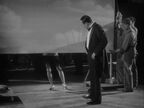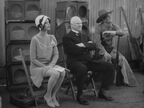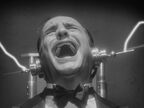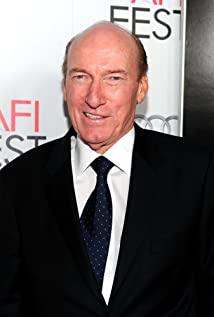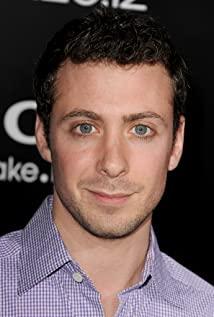http://blossomear.blogspot.com/2012/02/blog-post_22.html
¢Not only retro but also very modern
, maybe every era should have their own "Singin' in the Rain, 1952), can leave a story for audiences today and in the decades to come with the technology and vision of the moment—about how sound appears in film, about the sheer beauty of film, about how love lives on and off the screen Pure growth, all the wonderful tidbits behind the dance and smile. In the two spoof films of the Bureau of Strategic Affairs No. 117, he also recalled the old French director Michel Hazanavicius on the screen. This time, "The Great Artist" is not joking, but elegant and sincere, full of classic courage on the big screen. The performance was almost enough to make the audience burst into tears. Carefully walk on the melody of "Ten Thousand Flowers in Spring", learn classics with a humorous taste that is not out of the way, and bravely shoot with a contemporary point of view, and even completely retain the beautiful essence of silent films. It is undoubtedly an epoch-making bright film. Great eye. If the first year of the film was in 1895, when the Lumière brothers publicly screened "The Factory", the silent film only lived for 34 years. After 1929, when silent movies disappeared, another 83 years have passed. Now I actually re-watch them on the big screen, using modern technology to “restore” silent movies that only exist for 34 years.
¢ absent voice
The ancient film language is worth savoring. After all, the element of "lack" sound, how should a film sing only with pictures? Or what we should ask is: When people have not thought about film presentation in sound, and only use pictures, what kind of spiritual sound can they create? Since the definition of film by today's producers and viewers is different from that before 1929, it is almost impossible for filmmakers to hand over such high-standard "retro" works in modern film production for profit. Therefore, the film has been very courageous and insightful from the stage of ideation and proposal. The director once said in an interview report that, like painting or music - "silent films were once the utopia of language". Can you imagine? There was a time when people all over the world could cross cultural and ethnic barriers, watch the same movie on an equal footing, and laugh out loud for the same episode.
Because the form of silent films is pure and simple compared to today's films, the audience can also easily find it in "The Great Artist". Because of trying to approach the characteristics of the works of the year, this film is also very old-fashioned in terms of technology, narrative and theme. Grace. Especially the works shot in the film, the visual scheduling is mainly based on the left and right direction of the screen, just like the silent movies of the year, almost only rely on the left and right sides of a stage on the screen, and there is little vertical scheduling. For example, The General (1926) is a good example, which brilliantly uses the left and right sides to represent runaway locomotives heading south and north, creating tension for the audience. And the performance of the actors in the film is enough to remind many classic silent films.
What's interesting is that, unlike the film in the film, the lives of the protagonists George Valentin and Peppy Miller are closer to the movie flavors of the 40s and 50s. Especially the plot trend or scene scheduling, as well as the story purpose of exploring "original heart" and "true love" in the flowery world of the entertainment industry, one can't help but think of the classic work "Citizen Kane" (Citizen Kane, 2008), which also describes the artist's life situation. 1941). The director said that in order to add the "classicity" of the film, he referred to a lot of classic old movies, and in George Valentin's family life, he obviously borrowed almost exactly the same technique as "The Great Nation" to present a pair of How the couple's relationship plummeted.
Aside from its "classicity", the audience should also be able to find that "The Great Artist" has never been overwhelmed by classic old movies. On a script and technical level, this is more than just a movie trying to "restore" a certain era as it was written. Like Gus Van Son's "1999 Psycho" (Psycho, 1999) should not just want to color Hitchcock's classic works.
If we try to focus on the disappearing sound, we can see that it just happens to form a striking vacancy. The director cleverly used this absent element to create new ideas and weave them into the narrative. First of all, at the beginning of the film, the audience did not know that they were watching a "movie within a film". At this time, the soundtrack of the film was synchronized with the film within the film being shown, and the audience had to wait until the male protagonist looked at the film on the screen. When I was alone, I suddenly realized that the scene I just watched was a play within a play. Letting the people in the movie watch the big screen is also quite an old post-scenario technique, and when the music is gradually integrated into this layer of the story of George and Peppy's life, who is responsible for playing the sound element that blurs the boundaries, it gradually begins to clearly reveal the film. Themes: Film and Reality, Sound and Silence. After the studio owner told him that times had changed, "voice" became a hurdle in his mind. When he was getting to the bottom, some audience praised his puppy, but he laughed at himself "only if he can talk". And Peppy Miller was also accidentally caught by him saying that the reason why the audience loves her is "because i can talk!". Even his wife asked him to speak, not only for his dull home life, but also for his career.
To transform the character's perception of sound into the pressure on his heart, isn't it just a new perspective to deal with an era very similar to that of "Wan Hua Chun". The funniest thing was that horrible nightmare that Valentin had: there were voices all over the world, including the puppy, and even the phone in his dressing room, and it was jarring. The whole world is so noisy, and he alone can't make any sound. It's no wonder that the director called cut at the end of the film, when he heard his gasp after dancing violently, he was so surprised and happy.
¢The "screen" and "mirror" frameworks are confusing and difficult to understand the love path
The "screen" is also often used as an important element to demarcate the boundaries between fantasy and reality, movies and real life. But in this film, the "screen" from beginning to end symbolizes the goal he pursues. From the very beginning, Valentin looked at himself on the screen with satisfaction, to when he was finally down and down, he looked anxiously for the disappearing projection on the blank screen. "Mirror" also has a similar effect, often showing whether Valentin has been affirmed in the film. When he was down, what he saw in the window, and what he saw on the table, was the self that disgusted or upset him. However, when he and Miller first exchanged their gazes in the dressing room, it was only after looking through many mirrors that they finally met each other's eyes.
When I, as an audience, witnessed the two of them in a room full of mirrors, one caressed each other's clothes, wrote gratitude on the mirror, and the other gave each other a mole that is more suitable for the screen. The two repeatedly looked at each other in and out of the mirror. I can't help but worry about this mixed emotion. There are no trials or tribulations in the plot, but the emotions reflected back and forth by the mirror in this small room show that the love between the two is bound to pass the test of illusion and reality. After all, they must accept each other who are affirmed by their careers in the mirror before they can become one in the reality outside the mirror.
The scene in the dressing room made the two major themes of the film, "movie career" and "love" to be clearly identified. After the fire, Valentin hugged the film that he would not let go of, which was an emotional and concrete declaration. This volume commemorates the first time the two co-starred together, and it is also a silent in-film, once again successfully combining the protagonist's regret for his career with his emotional reluctance. The seemingly pure emotional development of the two people, but under the different design of the career development of the two sides, there is an interesting contrast, which makes the whole film more dazzling, and the watchability is greatly increased.
¢ Today in 2012, imagine the possibility of retro in the future
Returning to the previous article, the sound element that was absent in the film became one of the important elements of the film. Silent films that were taken for granted before 1929 are now being made as tributes to the retro. This can't help but teach people to try to think, maybe after another 80 years, will some people start to advocate film retro: "Let's make a very retro non-3D movie!" or "Let's make a spoof movie." Harry Potter, which was popular in the early 20th century," or even "come to make a movie with only one ending" or something?
Perhaps it is precisely because we have crossed the ancient era of movies and experienced technological innovations, big and small, that we can now go back and forth between history and the present leisurely and enjoy the sound/silence of movies. And this reminds us that in addition to trying to make modern people enjoy silent movies, the film also deliberately emphasizes various technical details. We can see the camera assistant walking back and forth on the screen to pull the tape measure in order to focus. At the end of the film, the director also called the voice, the camera, and finally the action, so that the actors began to walk. If one considers the change of time, such details will have some kind of record. Because of the constant emergence and impact of new technologies, these production details may soon be obsolete and sent to the Museum of Film History at any time.
However, Jean Dujardin's smiling face, which seems to have a place in every era, tells us at the end of the film with a dance full of joy - times will change, technology will change, and people's needs will also change, but love, laughter , dreams may be the best theme that will never change.
View more about The Artist reviews



